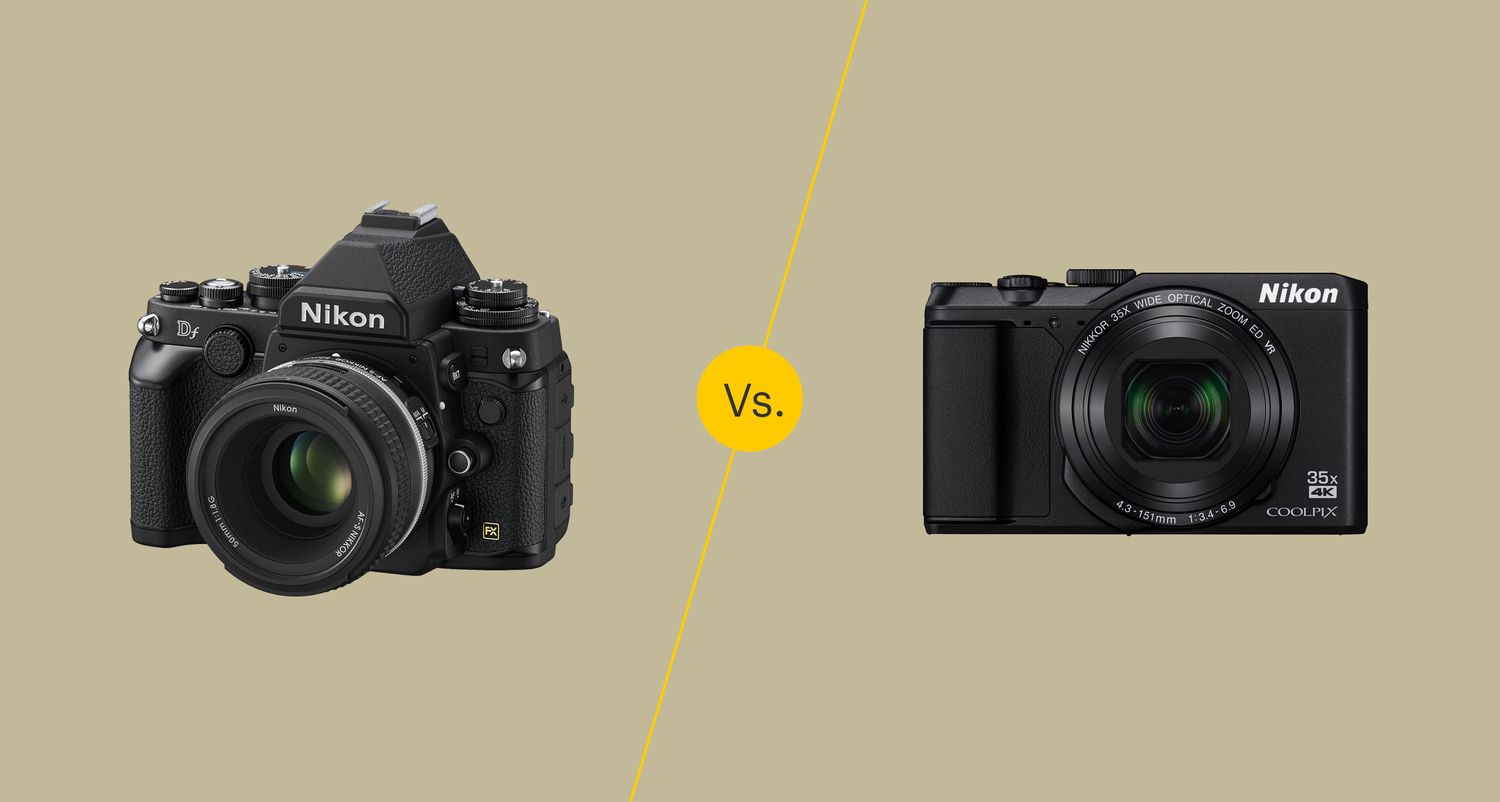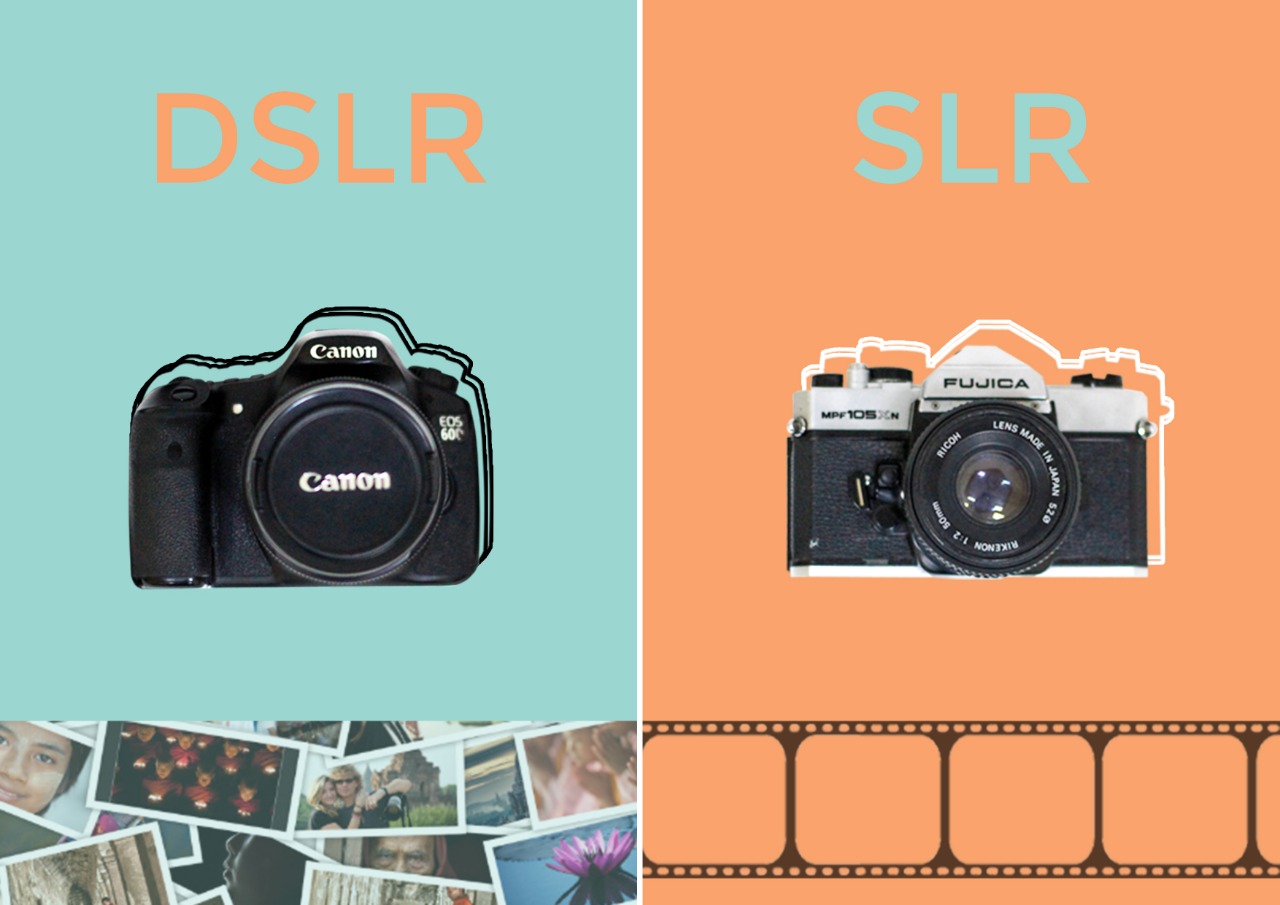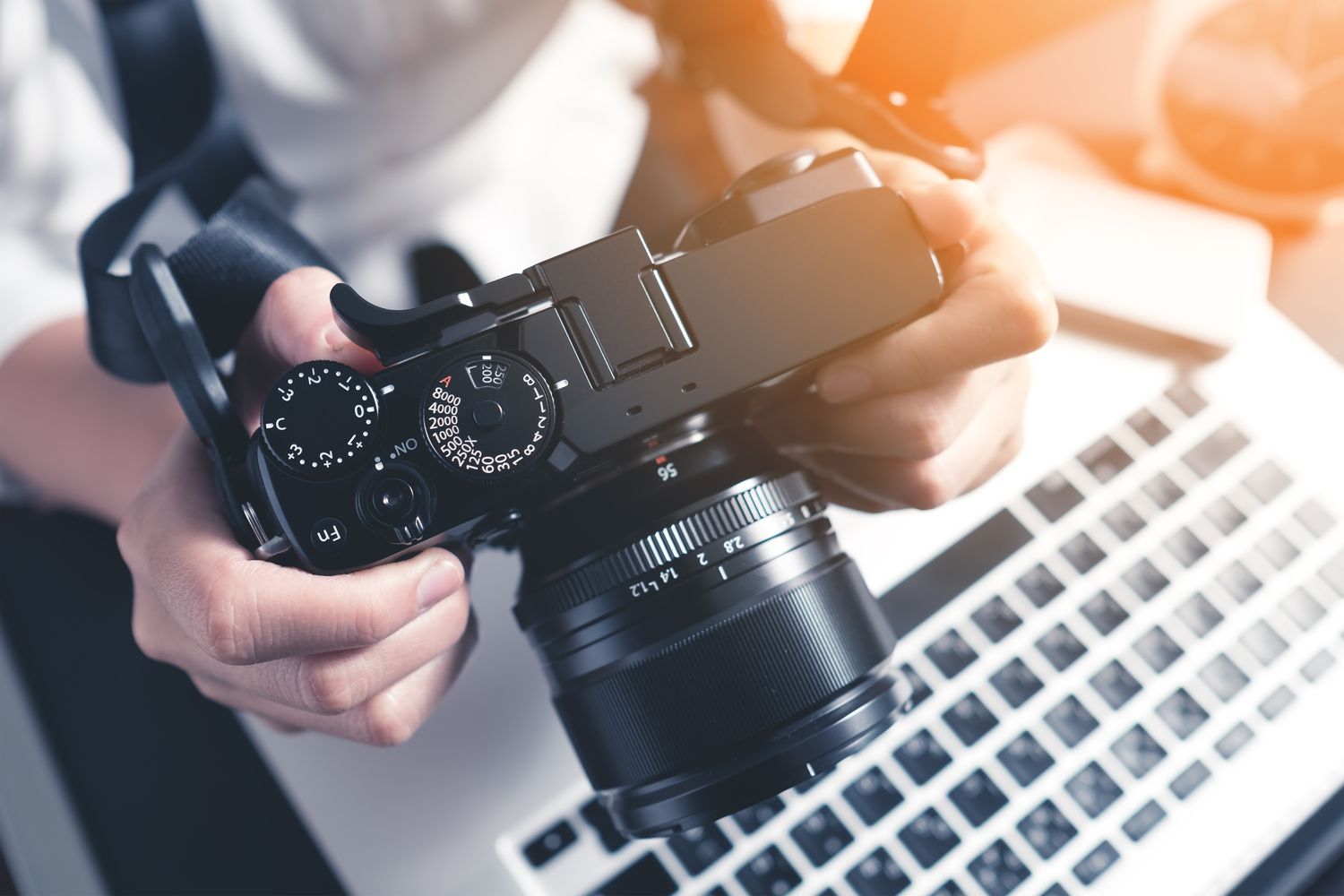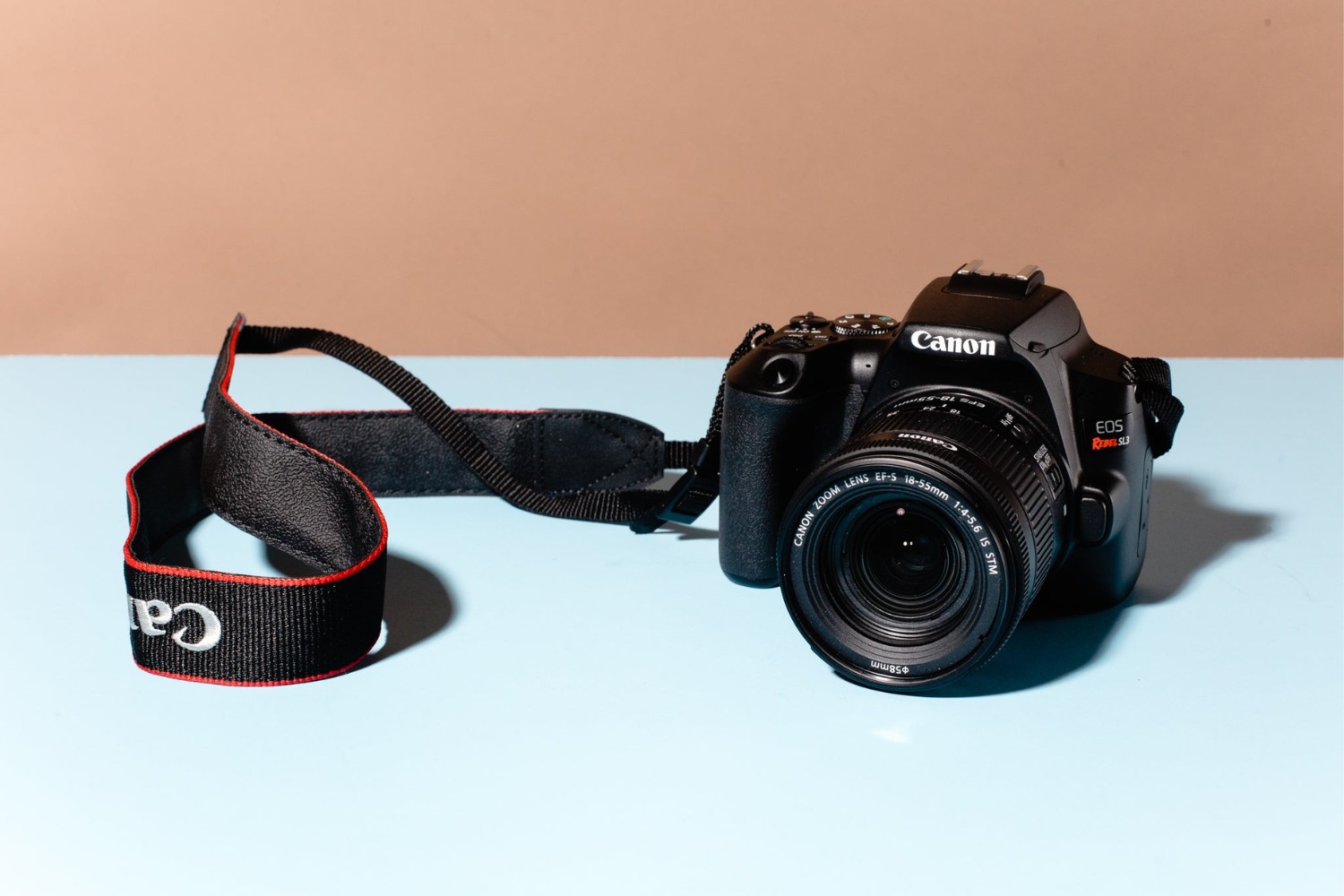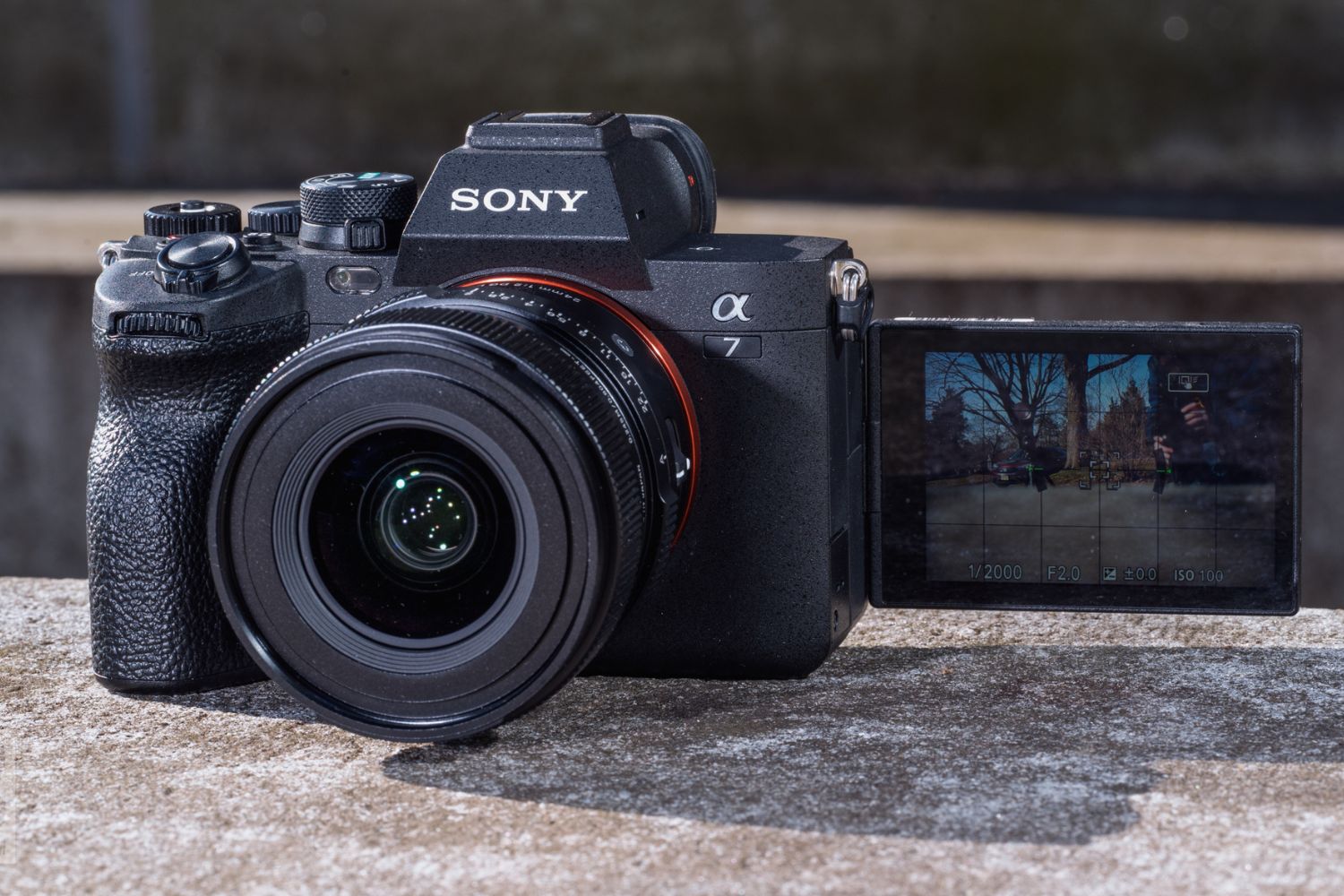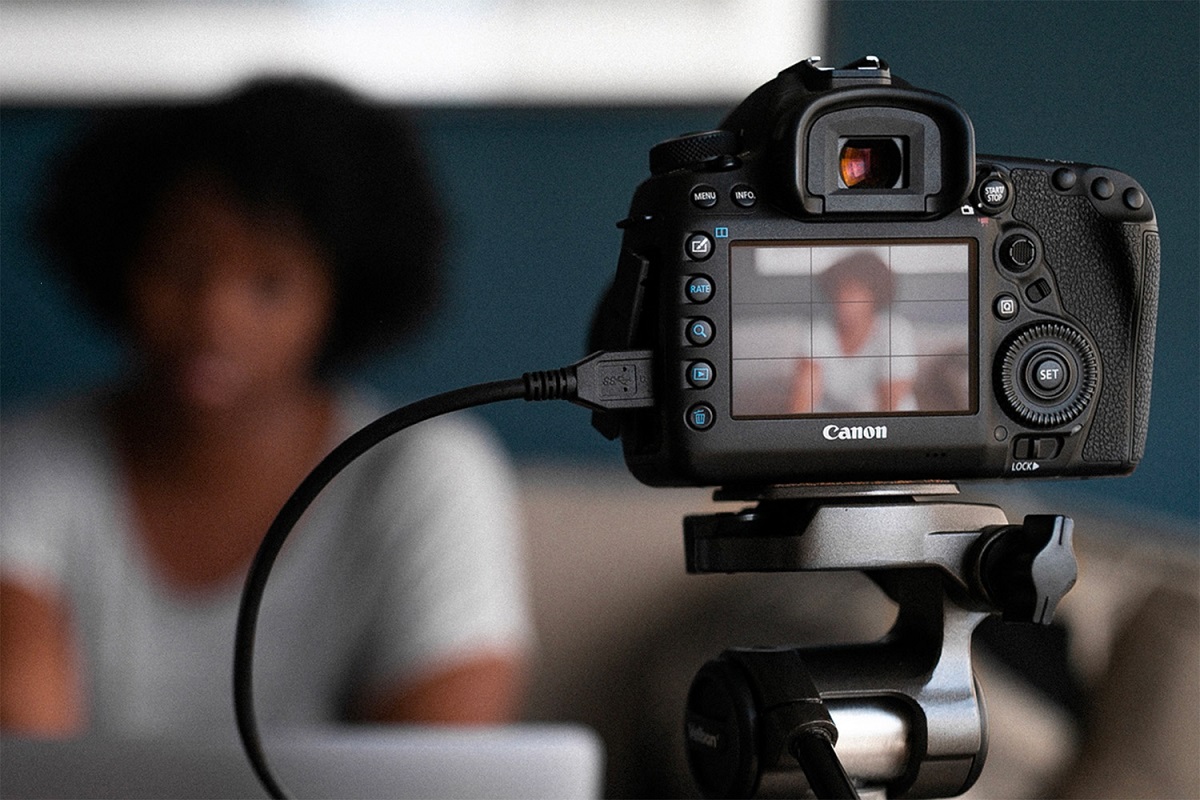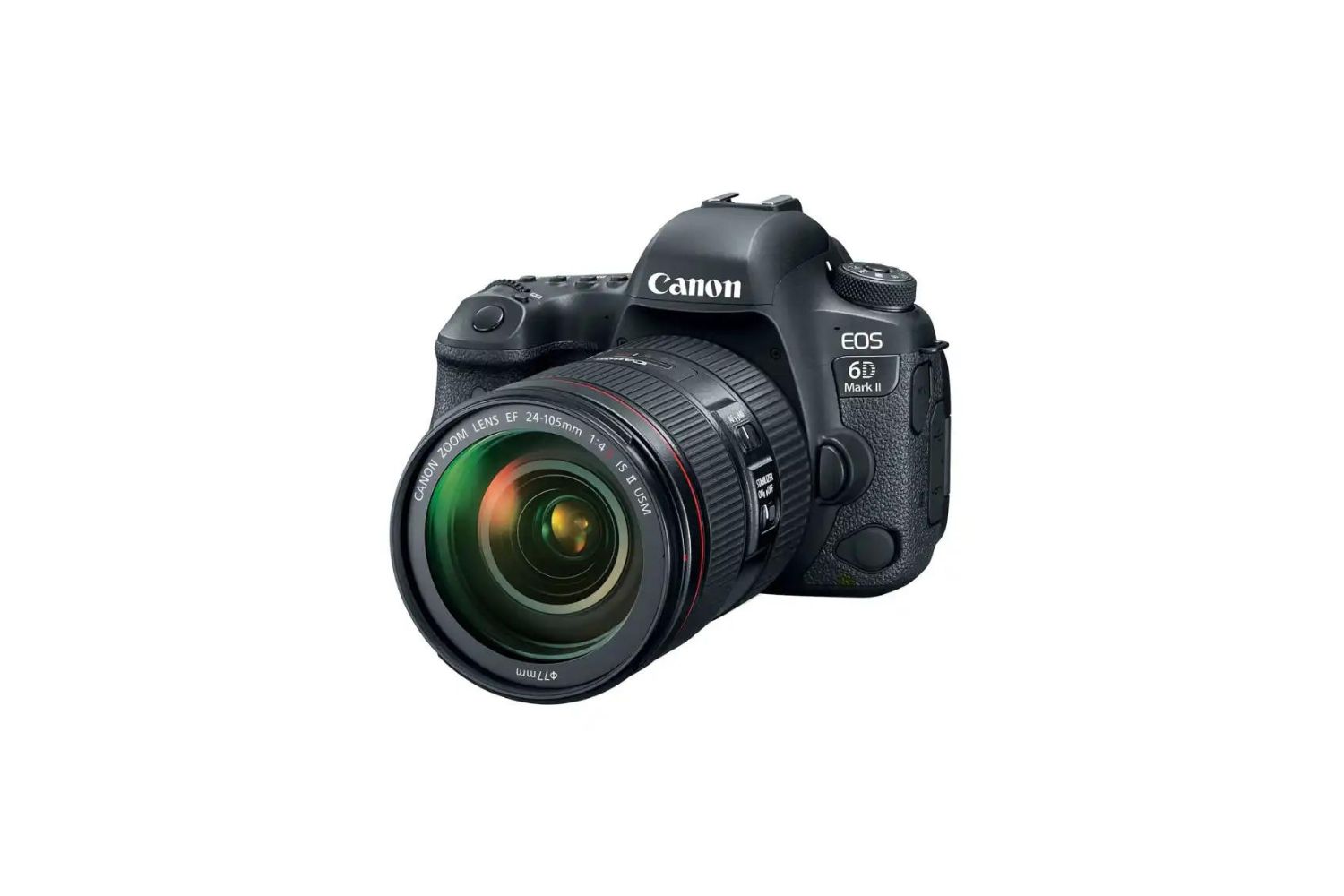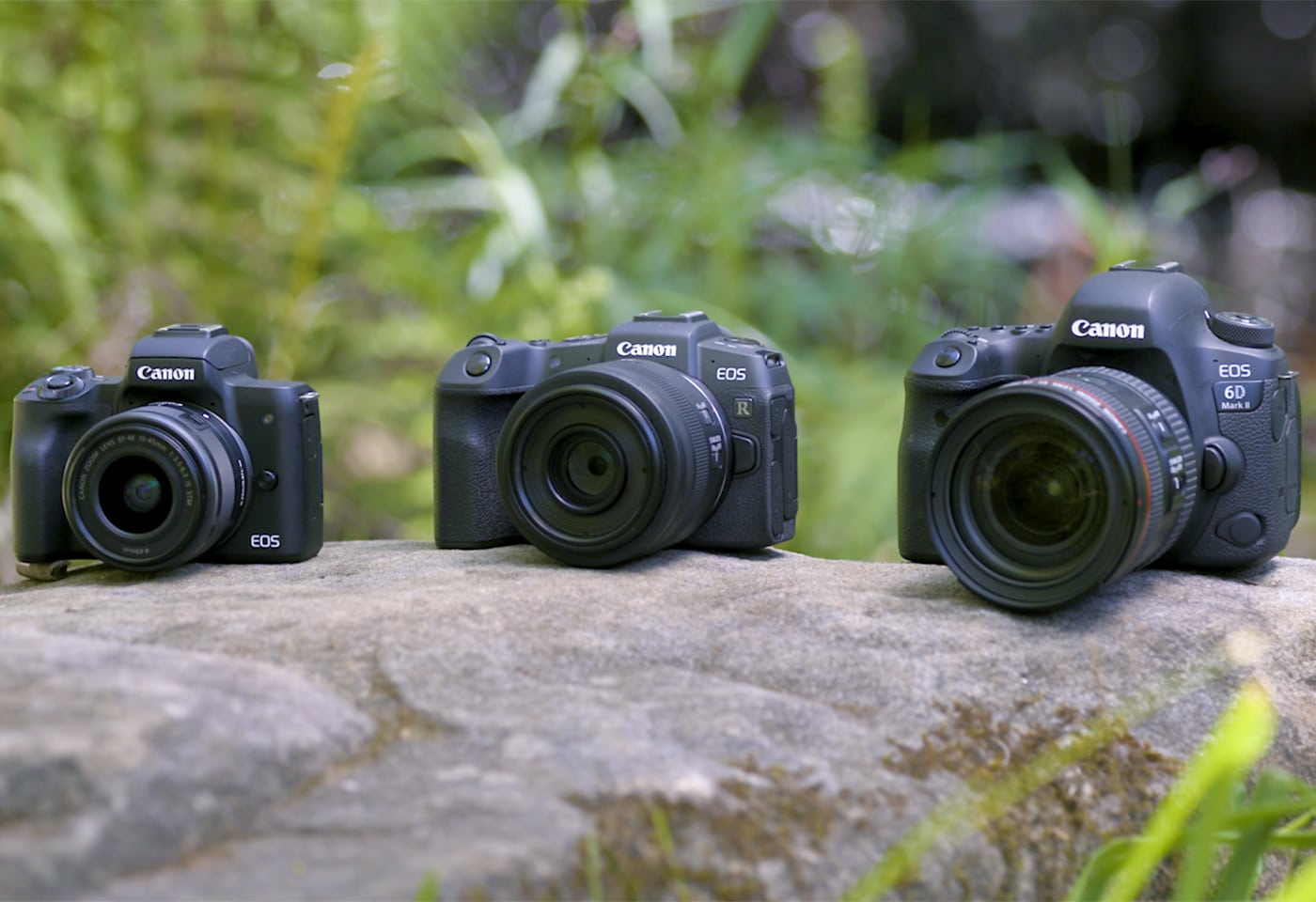Introduction
When it comes to capturing moments and preserving memories, we rely on cameras to do the job. With the advancements in technology, we now have a wide variety of cameras to choose from. Two popular options are DSLRs and digital cameras. While they may seem similar at first glance, there are significant differences between the two.
A DSLR, short for Digital Single-Lens Reflex, is a professional-grade camera designed for enthusiasts and professional photographers. It boasts advanced features and capabilities, making it a versatile tool for capturing high-quality images. On the other hand, a digital camera, also known as a point-and-shoot camera, is designed for casual users, offering simplicity and convenience.
In this article, we will explore the key differences between DSLRs and digital cameras, helping you make an informed decision when choosing the right camera for your needs.
Next, we will delve into the physical differences between DSLRs and digital cameras.
Definition of DSLR
A DSLR (Digital Single-Lens Reflex) camera is a type of camera that uses a mirror and prism system to direct light from the lens to the optical viewfinder. This optical viewfinder allows photographers to see exactly what the lens sees, giving them a clear and accurate representation of the subject. DSLRs are typically larger and more robust in design compared to digital cameras, making them suitable for professional photography.
One of the primary advantages of a DSLR is the ability to change lenses. The lens mount on a DSLR camera allows for easy attachment and detachment of different types of lenses. This versatility enables photographers to choose the ideal lens for different types of photography, such as wide-angle lenses for landscapes or telephoto lenses for capturing distant subjects.
DSLRs also offer a wide range of manual controls, giving photographers full control over settings like shutter speed, aperture, and ISO. This allows for more creative freedom and the ability to customize settings according to specific shooting conditions. Additionally, DSLRs often have larger image sensors compared to digital cameras, resulting in superior image quality, especially in low-light situations.
While DSLRs offer numerous advantages, they also come with some drawbacks. Due to their larger size and complexity, they can be more challenging to carry around and operate compared to digital cameras. Additionally, DSLRs generally have a higher price point, making them more suitable for photography enthusiasts and professionals who are willing to invest more in their equipment.
In the next section, we will discuss the definition of digital cameras and how they differ from DSLRs.
Definition of Digital Camera
A digital camera, also known as a point-and-shoot camera, is designed for simplicity and convenience. Unlike DSLRs, digital cameras are compact, lightweight, and easy to use, making them ideal for casual photographers and everyday photography.
Unlike DSLRs, digital cameras do not feature a mirror and prism system or an optical viewfinder. Instead, they come equipped with an electronic viewfinder or an LCD screen, which displays the image as seen through the lens. While this may not provide the same level of accuracy as an optical viewfinder, it offers users a convenient way to compose their shots.
One of the key advantages of digital cameras is their portability. Their compact size and lightweight design make them highly portable, allowing users to carry them around easily for impromptu shots or travel photography. Additionally, digital cameras typically have fixed lenses, eliminating the need to switch lenses for different shooting situations.
Another notable feature of digital cameras is their simplicity. These cameras are designed to be user-friendly, with automated settings and built-in features that help beginners to achieve good quality images without the need for extensive knowledge of photography techniques. While manual control options may be limited on digital cameras compared to DSLRs, they still offer basic settings such as exposure compensation, white balance, and scene modes.
Furthermore, digital cameras are generally more affordable compared to DSLRs. They are an excellent option for those on a budget or for casual photography needs, without compromising too much on image quality. Advances in technology have led to significant improvements in image quality for digital cameras, allowing them to produce high-resolution images with good color reproduction.
Now that we have explored the definitions of both DSLRs and digital cameras, let’s move on to examining the physical differences between these two types of cameras.
Physical Differences
One of the most noticeable differences between DSLRs and digital cameras is their physical appearance and size. DSLRs are typically larger and bulkier compared to digital cameras. They feature a sturdy and ergonomic design, providing a solid grip and better handling. This larger size allows for more space to accommodate advanced features, larger image sensors, and interchangeable lenses.
Digital cameras, on the other hand, are compact and lightweight. They are designed to be portable and easy to carry around, making them suitable for on-the-go photography. Due to their smaller size, digital cameras may have smaller image sensors, resulting in limitations when it comes to capturing high-quality images in low-light conditions.
Another physical difference between DSLRs and digital cameras is the presence of an optical viewfinder. DSLRs utilize a mirror and prism system to direct light from the lens to the optical viewfinder, giving photographers a real-time, accurate preview of the subject. This feature is absent in digital cameras, which instead use an electronic viewfinder or an LCD screen to display the image. While electronic viewfinders and LCD screens offer a convenient way to compose shots, they may not provide the same level of clarity and accuracy as an optical viewfinder.
Moreover, DSLRs are typically equipped with a larger grip, allowing for easier handling and better stability when capturing images. This is particularly important when using larger telephoto lenses that require a more secure grip. Digital cameras, due to their smaller size, may have a more limited grip, which may not provide the same level of stability and comfort for extended shooting sessions.
The physical differences between DSLRs and digital cameras extend to their control layout as well. DSLRs often come with dedicated buttons and dials for quick access to various settings, allowing photographers to adjust options on the fly. Digital cameras, on the other hand, may have a more simplified control layout with fewer physical buttons, relying more on menu navigation through the LCD screen for adjusting settings.
In the next section, we will explore the difference in image quality between DSLRs and digital cameras.
Image Quality
When it comes to image quality, DSLRs have the upper hand over digital cameras. DSLRs generally feature larger image sensors, which allow them to capture more light and produce sharper, more detailed images. The larger sensor size also contributes to better dynamic range, meaning more accurate reproduction of highlights and shadows in a photo.
Additionally, DSLRs often have better noise performance, especially at higher ISO settings. This means that DSLR images tend to have less noise or graininess, resulting in cleaner and more professional-looking shots, particularly in low-light situations. The superior image quality of DSLRs makes them an excellent choice for professional photographers or those who prioritize getting the best possible image quality.
On the other hand, digital cameras have also come a long way in terms of image quality. While they may not match the image quality of DSLRs, they still offer good results for everyday photography. Digital cameras now come equipped with higher megapixel counts, allowing for more detailed images. They also have advanced image processing algorithms, which help to sharpen images and improve color accuracy.
However, due to their smaller image sensors, digital cameras may struggle in low-light conditions. Images captured with digital cameras at higher ISO settings might exhibit more noise or grain. This can lead to a loss of detail and overall image quality. Nevertheless, for casual photographers and everyday use, digital cameras can still produce satisfactory results.
It’s worth noting that the difference in image quality between DSLRs and digital cameras becomes more noticeable when images are viewed at larger sizes or when significant post-processing is involved. If you prioritize image quality and plan on printing large-sized images or conducting extensive editing, a DSLR would be the recommended choice.
In the following section, we will discuss the availability of interchangeable lenses for DSLRs and its impact on photography.
Interchangeable Lens
One major advantage that DSLRs have over digital cameras is the ability to change lenses. DSLRs feature a lens mount that allows photographers to attach and swap out different lenses based on their specific needs and shooting situations. This interchangeability of lenses adds a whole new level of versatility and creative control to photography.
With a wide range of lenses available, photographers can choose from a variety of focal lengths, including wide-angle, standard, telephoto, and macro lenses. Each lens type offers unique perspectives and capabilities, allowing photographers to capture different subjects and achieve specific creative effects. Whether it’s capturing breathtaking landscapes, stunning portraits, or detailed close-ups, the ability to change lenses on a DSLR opens up a world of possibilities.
Interchangeable lenses also provide the opportunity to upgrade and invest in high-quality lenses that can improve image quality and expand shooting capabilities. As technology advances, new lenses are constantly being introduced into the market, offering improved optics, enhanced autofocus performance, and advanced features. This means that photographers can adapt and grow their lens collection over time, further refining their photography skills.
On the other hand, digital cameras typically have fixed lenses, meaning they are built-in and cannot be changed. While this may limit the versatility and flexibility of the camera, fixed lenses can also have their advantages. Fixed lenses are often optimized for a specific focal length, resulting in excellent image quality and compact designs. They are also convenient for users who prefer simplicity and don’t want to deal with the complexity of interchangeable lenses.
It’s important to note that the availability of interchangeable lenses for DSLRs can significantly impact the overall cost. High-quality lenses can be expensive, especially those with advanced features and superior optics. As a result, the ability to change lenses on a DSLR often comes with a higher price tag compared to digital cameras with fixed lenses.
Interchangeable lenses provide photographers with the freedom to experiment with different perspectives, focal lengths, and depths of field. In the next section, we will explore how the manual controls on DSLRs enhance the creative possibilities in photography.
Manual Controls
A significant advantage that DSLRs offer over digital cameras is the extensive range of manual controls they provide. DSLRs give photographers granular control over various settings such as shutter speed, aperture, ISO sensitivity, white balance, and more. This level of control allows photographers to fine-tune their settings for optimal exposure and creative effect.
By adjusting the shutter speed, photographers can control how motion is captured in their images. They can freeze fast-moving subjects with a fast shutter speed or create motion blur with a slower shutter speed. Aperture control allows photographers to determine the depth of field in their photos, controlling the amount of focus on a subject and creating a pleasing background blur, also known as bokeh.
ISO sensitivity control is another essential feature that DSLRs provide. With ISO adjustments, photographers can change the camera’s sensitivity to light, allowing for better exposure in low-light conditions. This feature is particularly useful for night photography or indoor shooting without adequate lighting. DSLRs typically offer a wider range of ISO settings compared to digital cameras, resulting in better image quality in challenging lighting situations.
White balance control is crucial for accurately reproducing colors in different lighting conditions. DSLRs provide various white balance presets, allowing photographers to adjust the color temperature based on the lighting environment. This feature ensures that the colors captured in the image closely resemble the natural colors of the scene.
In addition to these primary manual controls, DSLRs often offer advanced features such as exposure compensation, bracketing, and customizable function buttons. These features provide even more creative flexibility and control over the final image outcome. Photographers can fine-tune their exposure settings, capture multiple exposures for HDR (High Dynamic Range) images, and customize the camera’s operation to suit their shooting preferences.
While digital cameras also offer some manual control options, they are typically more limited compared to DSLRs. Digital cameras often provide basic settings for exposure compensation and white balance adjustment. However, they may lack the ability to adjust shutter speed, aperture, and ISO sensitivity manually. This simplicity in controls is ideal for beginners or casual photographers who prefer a more automated shooting experience.
The manual control capabilities of DSLRs give photographers the freedom to experiment, express their creativity, and fully control the technical aspects of their images. In the next section, we will discuss the price range differences between DSLRs and digital cameras.
Price Range
When considering DSLRs and digital cameras, price range is an important factor to take into account. DSLR cameras are typically more expensive than digital cameras due to their advanced features, better image quality, and the ability to interchange lenses.
DSLRs come in various models, ranging from entry-level to professional-grade. Entry-level DSLRs are more affordable and may suit beginners or photography enthusiasts who are on a tighter budget. As you move up the price range, you will find DSLRs with higher-end features, improved image sensors, faster autofocus systems, and more advanced performance capabilities.
Along with the camera body, the cost of DSLRs is influenced by the lenses. High-quality lenses can be quite expensive, especially those with larger apertures or specialized features. As photographers expand their lens collection, they may need to invest in additional lenses to suit different photography genres or preferences.
On the other hand, digital cameras generally have a lower price range compared to DSLRs. They are designed to be more affordable and accessible to a broader range of users. Digital cameras often come with fixed lenses, eliminating the need for additional lens purchases. However, higher-end digital cameras with advanced features and better image quality can still have a higher price tag.
It’s important to consider your photography needs, budget, and long-term goals when deciding between a DSLR and a digital camera. If you are a professional photographer, budding enthusiast, or prioritizing exceptional image quality, investing in a DSLR may be worth the higher cost. However, if you are a casual photographer or on a limited budget, a digital camera can still offer you satisfactory image quality and ease of use.
Ultimately, the price range of DSLRs and digital cameras can vary significantly depending on the brand, model, features, and accessories included. It’s recommended to research and compare different options within your budget to find the camera that best meets your needs.
Now that we have explored the price range differences, let’s move on to discussing the portability of DSLRs and digital cameras.
Portability
Portability is a significant factor to consider when choosing between a DSLR and a digital camera. DSLRs tend to be larger and bulkier, making them less convenient to carry around for extended periods or during travel. Their size and weight can be a drawback for photographers who prefer a lightweight and compact setup.
Digital cameras, on the other hand, are designed with portability in mind. They are compact, lightweight, and easy to carry, making them ideal for on-the-go photography. Their smaller size allows them to fit comfortably in a pocket or a small bag, enabling photographers to capture spontaneous moments without the need for additional equipment or accessories.
Portability is especially crucial for travel photographers or those who are constantly on the move. The compact nature of digital cameras makes them more suitable for capturing travel experiences, taking street photography, or documenting everyday moments discreetly. Their portability allows photographers to explore new locations and photograph them without feeling weighed down by bulky equipment.
However, it’s worth noting that there are smaller DSLR options available that offer a balance between portability and advanced features. These compact DSLRs may not be as lightweight as digital cameras, but they still provide the advantage of interchangeable lenses and advanced manual controls, making them a suitable choice for photographers who prioritize both portability and versatility.
Ultimately, the portability factor depends on your own preferences and photography needs. If you value the convenience of a small and lightweight camera that can easily be carried everywhere, a digital camera may be the better choice. However, if you are willing to sacrifice some portability for the added features, image quality, and flexibility of interchangeable lenses, a DSLR could be the right fit.
Now that we have explored the differences in portability, let’s move on to discussing the ease of use between DSLRs and digital cameras in the next section.
Ease of Use
When it comes to ease of use, digital cameras are often considered more user-friendly compared to DSLRs. Digital cameras are designed with simplicity in mind, making them accessible to beginners and casual photographers who may not have extensive knowledge of photography techniques or manual controls.
One of the key advantages of digital cameras is their automated settings. These cameras come with various shooting modes, including auto mode, scene mode, and even intelligent auto mode. These modes enable the camera to automatically adjust settings such as exposure, focus, and white balance based on the scene or subject being captured. This automatic feature allows users to point and shoot without having to adjust multiple settings manually.
Digital cameras often have a user-friendly interface with easy-to-navigate menus and icons, making it simple to change settings or access basic functions. They also typically have fewer physical buttons compared to DSLRs, which can make the camera less intimidating and easier to use for beginners.
On the other hand, DSLRs offer a more advanced level of control and customization. While this can be appealing to experienced photographers, it may seem overwhelming to those who are new to photography. DSLRs come with a wider array of manual controls and settings, which may require some learning and practice to fully understand and utilize.
However, DSLRs often have helpful features such as a built-in guide mode or assistance systems that can provide guidance and tips for beginners. These features can help users learn and improve their photography skills gradually while still having the option to explore more advanced features as they grow more comfortable with the camera.
It’s important to consider your skill level, interest in learning photography techniques, and the level of control you desire when deciding between a DSLR and a digital camera. If you prefer simplicity and want a camera that can quickly and easily capture images without much manual intervention, a digital camera may be more suitable. On the other hand, if you have a keen interest in photography, enjoy experimenting with manual controls, and want the flexibility to customize your settings, a DSLR could be the better choice.
In the next section, we will summarize the differences between DSLRs and digital cameras that we have discussed throughout this article.
Conclusion
After exploring the differences between DSLRs and digital cameras, it’s clear that both options have their unique advantages and considerations. The choice between the two ultimately depends on your specific needs, preferences, and photography goals.
DSLRs are designed for photography enthusiasts, professionals, and those who prioritize image quality, versatility, and advanced manual control. They offer superior image quality, the ability to change lenses, extensive manual controls, and the potential for growth with a wide range of accessories. However, they tend to be larger, more expensive, and require a learning curve to fully utilize their features.
Digital cameras, on the other hand, are ideal for casual photographers, beginners, or those seeking simplicity and portability. They provide convenience, compactness, ease of use, automated settings, and are often more budget-friendly. While they may not offer the same level of image quality or versatility as DSLRs and lack interchangeable lenses, they are sufficient for everyday photography and capturing memories on the go.
In the end, it is essential to assess your specific photography needs, budget, desired level of control, and portability requirements when making a decision. Consider your skill level, interests, and long-term goals to determine which camera best suits your style of photography.
Remember, both DSLRs and digital cameras have their place in the photography world, and advancements in technology continue to bridge the gap between the two. Regardless of your choice, what matters most is your passion for capturing moments and expressing your creativity through photography.
Now armed with a better understanding of the differences between DSLRs and digital cameras, you can make an informed decision and embark on your photography journey with confidence.







